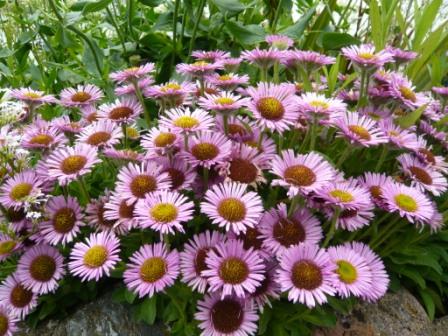
Stokesia Laevis Aster Like Flowers
Stokes’ aster is an unusual plant with large cornflower-like blooms on low growing plants, with rosettes of narrowly lance-shaped, dark-green leaves. It has a long flowering season, from mid-summer until the first severe frost in mid-autumn. The flowers are very good for cutting.

Growing Conditions
- An evergreen, Stokesia Laevis preferring acid soil, a sunny spot, and very good drainage. The roots may rot if plants are too wet in winter.
- The long lasting flower heads are produced on plants 12-18 inches high with a similar spread.
- The summer flowers are generally purplish/blue in a starry pattern and are ideal for cutting or attracting butterflies.
- Stokesia laevis like good drainage, particularly in the winter, so a raised bed or rock garden may be worth trying.
- Stokes’ Aster is a North American native wildflower with a double Shasta Daisy in effect.
- Plants form a low mound of leathery green leaves, remaining evergreen in mild winter areas.
Selected Varieties
Stokesia Laevis Purple Parasols
Stokesia Laevis alba
Stokesia laevis ‘Blue Danube’ with 4 inch wide lavender flowerheads
Stokesia laevis ‘Wyoming’ has the darkest blue flowerheads of all
Stokesia laevis ‘Omega Skyrocket’ is a vigorous variety growing 3-4 ft tall and has long-stems of white to pale blue flower.
Photo credits
Stokes’ Aster by BlueRidgeKitties CC BY-NC-SA 2.0 ‘These pretty flowers were planted at the Daniel Boone Native Gardens in Boone. They are native to North Carolina, but more at home in the coastal plains than in the mountains. They are commonly cultivated for garden use. If you have them in your yard, cutting the dying flowers before they set seeds will make the plants produce more flowers throughout the entire summer. ‘
STOKESIA by Swami Stream, CC BY 2.0
Stokes Aster by cmcgough CC BY-NC-ND 2.0

